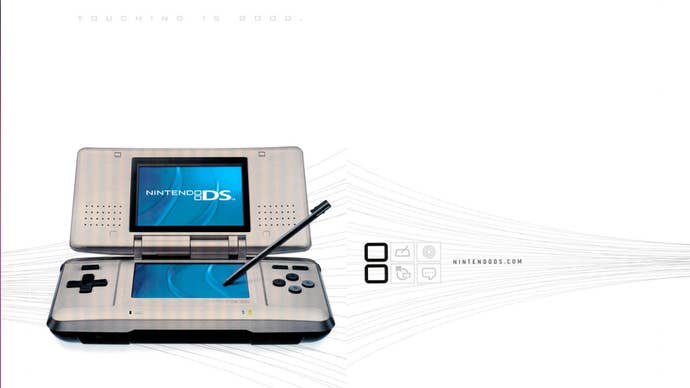20 years ago, Nintendo changed how I thought about games forever with just two screens
The Mario develper is yet to make a better console, honestly.
Do you also think games consoles are a bit boring these days? I do. There's no whimsy to them anymore, nothing strange or eclectic about them, apart from the Nintendo Switch, but even then I reckon the most special thing about it is its hybrid format. Aside from that, it doesn't really change how games work, it's more just about the kind of spaces that you can play games in. That's all well and dandy, and it is typically Nintendo - strange, but incredibly influential - I just feel like I'm looking for… more.
The funny thing is, Nintendo already made the exact thing I'm looking for 20 years ago to the day: the DS. Man, what a console! The minute I laid my eyes on that thing as a kid, I knew it was something special, and considering by the end of the entire line's lifespan it ended up being the second best-selling console of all time, it seems that other people felt the same way.
Technically speaking, the dual screens that make up the DS (yes, that's what DS stands for if you didn't realise) wasn't a new thing for Nintendo, it had already done such a thing with the Game & Watch, once again proving that the developer and hardware maker had always been ahead of the times. The DS was obviously much more powerful than any Game & Watch, and of course more so than the Game Boy Advance, too, allowing for some much bigger titles. Yet it's that second screen that's the big draw, the thing that makes you go, "now what's all this then?"
Right off the bat, a second screen opens up a whole new avenue of gameplay, which is increased even further by the fact it's touchscreen. There are so many great examples of games that used the DS in interesting ways, including, unsurprisingly, Nintendo itself. Mario & Luigi: Partners in Time, for example, was a ridiculously strong follow-up to its GBA predecessor, where the adult and baby versions of Mario and Luigi could be on two separate screens, letting you switch back and forth between them to solve different puzzles - simple, but oh so clever.
The original The World Ends With You had you battling on the bottom and top screen with two different characters, requiring you to sync them up to be more effective in beating your enemies. Hotel Dusk literally had you use your DS in portrait mode, making it have a book-like quality, perfect for a text-heavy game like it is. Hell, even just making more room on the top screen for your Pokemon by putting all the main UI stuff on the bottom screen makes for more exciting action.

While some of these games I played later in life, I think the culmination of all of them really changed how I looked at and thought about games, particularly what they can be. Or, I guess, more how we can engage with them. There's just something special about having another interface to interact with, it makes you feel so much more involved in the game you're playing in a way no console has really been able to capture since. It made games feel bigger, too, like there's even more to explore than there was on any console before it.
The DS helped me think of games as dedicated spaces, spaces that are frequently meant to be playful, which the handheld often was. I might not have realised as a kid, but it definitely pushed me to be more thoughtful about how we can interact with games, something that feels harder to do when they've become so homogenised - all controllers are basically the same thing with a different lick of paint these days, and the consoles themselves don't even bother with interesting home menus, it's just about getting you into the game as quick as possible.
I don't play my OG DS as much as I used to, my 3DS is the go to these days, but I still find that same playfulness there that drove me towards the taste I have in games today. It's weird to think that even 20 years later I'm still thinking about this console that was so ahead of its time, but hey - that's what happens when you're one of the best handhelds around.

.jpg?width=70&height=70&fit=crop&quality=60&format=png&auto=webp)